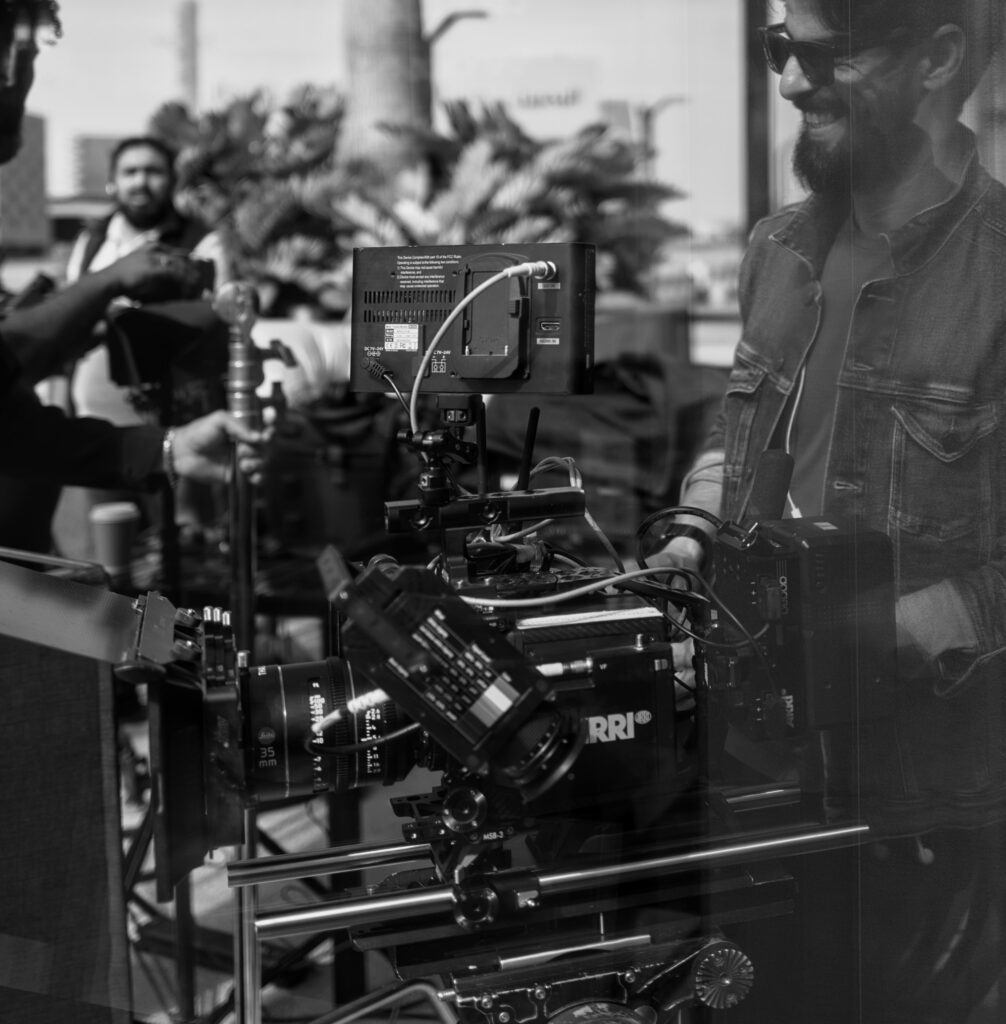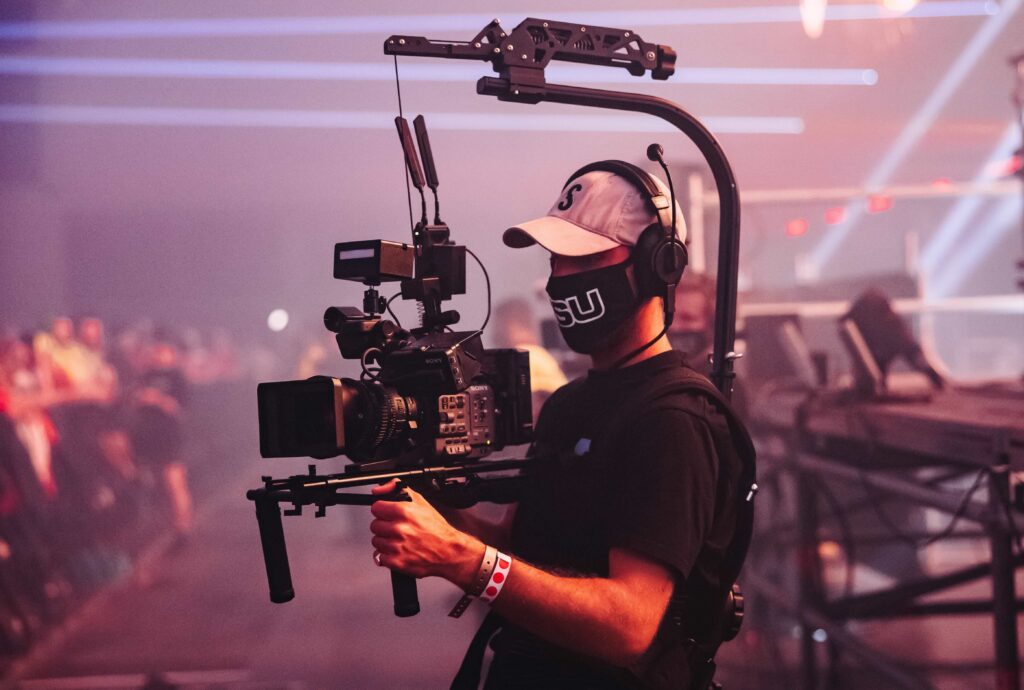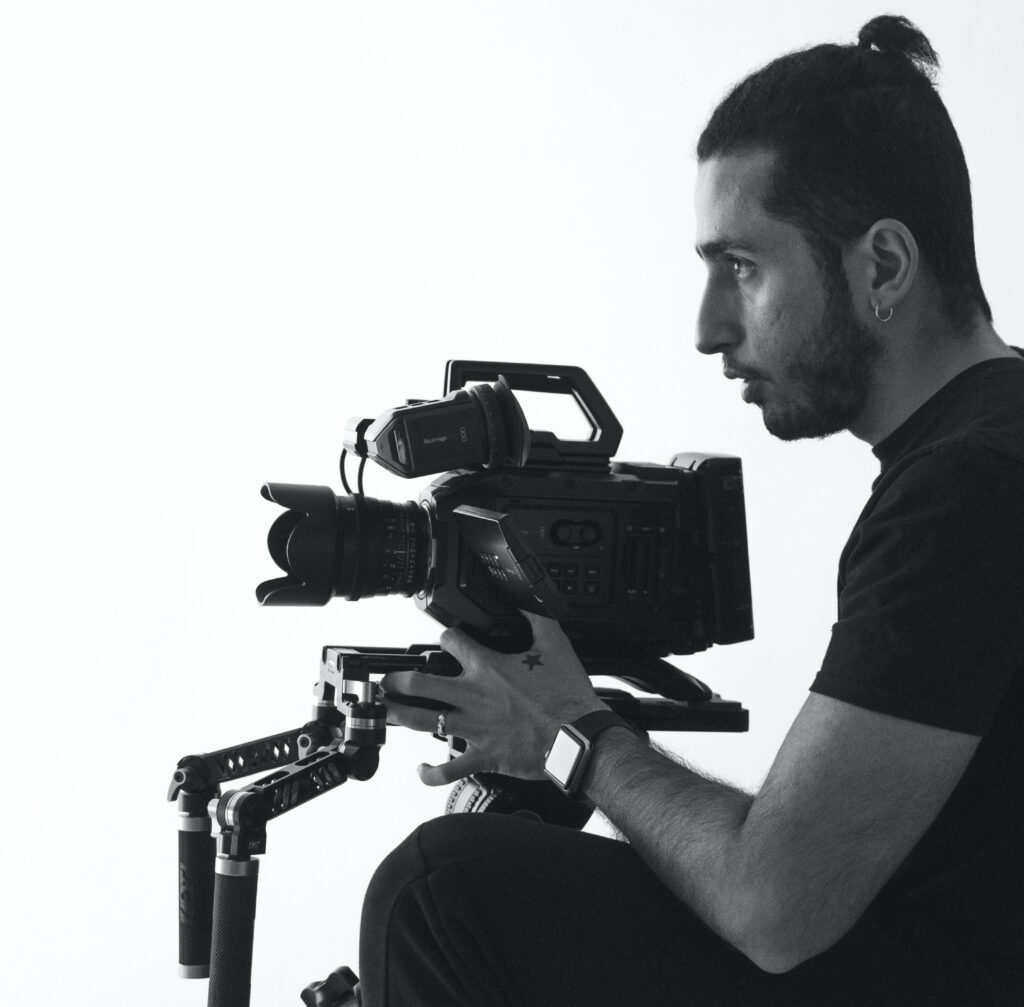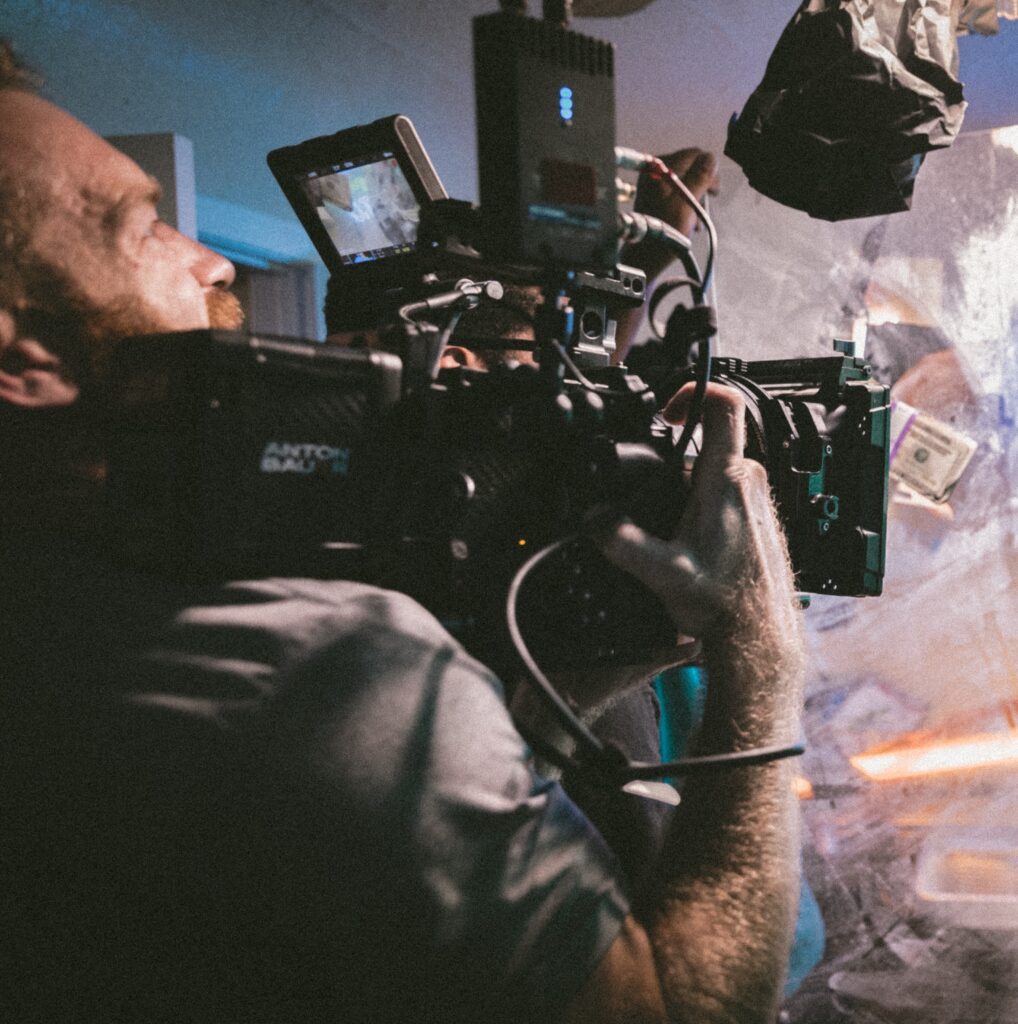With so many different types of cameras on the market, it’s difficult to keep up with the specific features of each. The MediaSilo by EditShare team designed this guide to cover the major factors affecting post-production for each of the major camera platforms currently popular in production. Our goal with this guide was to help you know what questions to ask and what to expect when coming on to a production shooting on any of these systems.
ARRI ALEXA
ARRI has been a dominant camera maker for going on 100 years now, and the ARRI ALEXA platform is a widespread capture format across motion pictures, television, commercials and music videos.
The ALEXA platform can shoot into both video files (in either ProRes or DNx formats, depending on your workflow) in either the .mxf or .mov wrappers) or into RAW. For a long time, RAW was less common on ALEXA jobs since it required renting an accessory recorder that significantly raised costs, but for several years now .ARRIRAW capture has been built into the system.

RAW isn’t the default on mid or low-budget projects, as the files are massive. Working with RAW requires a lot of post-processing to handle and more hard drive space for downloading and backup. The larger productions default to .ARRIRAW, but many smaller productions will shoot video files in Log.
The ARRI Log format is known as Log C, and there is a LUT available on the ARRI website to support it. Currently, there are two versions of the Log C LUT in common use: LogC3, which is the newest LUT for earlier generations of the ALEXA, and LogC4, which is used for the new color science that came with the ALEXA 35 and that is supported with the LF and Mini LF. ALEXA Log C color (both 3 and 4) is also fully implemented in the ACES workflow and Resolve Color Management. In fact, the ALEXA implants a flag in the video files so that Resolve can auto-detect if it was shot in Log C, in which version, and automatically transforms it to linear video when working in Resolve Color Management.
The ALEXA platform doesn’t typically support recording simultaneously to RAW and video proxies, though that isn’t recommended anyway when working with a single-card camera like the ALEXA lineup. Doing simultaneous RAW and proxy recording to a single card increases data management time and hard drive expense.
The ALEXA has a common timecode input standard for the industry, 5-pin LEMO. It also reputationally has one of the better internal timecode clocks that seems to drift less than others, but there is still some drift, and timecode should be jammed at least twice a day.
While it seems like the ALEXA lineup has everything a post team might want, the lineup does have some hiccups that post teams should be aware of, especially around the area of audio. The most notable is that the full-sized ALEXA LF only has a 5-pin XLR input (instead of the normal 3-pin) and the Mini LF uses the obscure and pricey 6-pin LEMO connection. This special connector is for a single-cable connection to bring 4 tracks of audio into the cable the simplest way possible, which is a noble goal, but of course, requires the sound team to have the cable. In addition, while many cameras allow audio to be input at either mic or line level, the ALEXA lineup traditionally only allowed for line level, which means if you wanted to record a “scratch” audio track with a microphone on the camera for absolute backup or to hear operators comments, you needed a mic to line converter. The newest bodies, the Mini LF and the ALEXA 35, now have built-in microphones to serve this purpose.
ALEXA bodies put out the filename over SDI, so you can use something like a Teradek Cube to make proxies with a filename match for later relinking.
If you are encouraging the production team to run a scratch mix to the camera, they might well enough up needing to purchase a special cable or down converter to do so.
RED
The RED camera platform is widespread both on RED-native productions and also as a special-purpose camera on other productions for its flexibility. It was one of the first platforms to launch with a smaller camera form factor (the DSCM2 bodies) and was capable of high frame rates without the expense and complication of a specialty camera like the Phantom. As such, it’s incredibly common to see the RED as a second camera on an ALEXA show since the ALEXA had more limited slow-motion capture options. The ALEXA would be A and B camera for most of the heavy lifting, and then the RED would fly out on a steadicam or a gimbal for action sequences.
RED camera as a company is heavily responsible for pushing RAW image capture in motion pictures, starting with their launch at NAB 2006, and for a long time, was a true leader in the space. In the early years, there were some frustrations with their post integrations, with the company making statements like, “Kodak doesn’t tell you how to develop your film, we won’t tell you what to do with our images,” which was frustrating for many users since, in fact, Kodak did publish technical guides on development, and a camera maker having robust post software support was a good thing. RED originally pushed its own software, REDCine, for a lot of early post work.

However, RED has now fully integrated with other popular software platforms and could arguably be considered one of the most widely supported cameras in the post world. Native support for RED RAW .r3d file processing is built into every major NLE, and when RED updates its firmware with new image parameters, the updates flow into other software like Resolve with rapid speed.
One thing to remember with RED RAW is that it is live debayering the images, which can be processor intensive. If your editor will be working on a lower-power machine, it is still highly recommended that you render video dailies into a format like ProRes or DNx for editing. RED does offer the ability to change your debayer quality, which can make for easier processing on your system, but that comes with image quality tradeoffs.
While RED does have a Log format, it is very uncommonly used, as the default and most common format to capture when shooting RED is straight to RAW in .r3d files.
RED cameras offer the ability to shoot natively to both .r3d RAW files and .mov or .mxf video files at the same time. However, most users find that this fills cards up more quickly, increases download time and increases the complication and expense of on-set downloads. While there are occasional jobs where this might make sense (a tight turnaround job that requires both the flexibility of RAW and the immediacy of dailies), it’s very uncommon. Another solution to that same problem would be using a proxy box like the Teradek Cube to make immediate proxies. The filename passes over SDI with the RED cameras for later relinking to your RAW file.
RED cameras use the common 5-pin DIN timecode format. Reputationally RED cameras don’t keep the best internal timecode, and many recommend re-jamming often or using an external timecode box to feed more stable timecode into the system.
RED camera bodies have both on-body microphones for scratch tracks and have industry-standard audio inputs for sending in a microphone or a mix if necessary.
Panavision
Panavision is in an interesting position in that they have a major camera platform, the DXL (or Digital-XL), that is very popular, especially in Television production.
However, as Panavision is best known for its lenses and was never particularly famous for its camera bodies, they actually built the DXL system on top of RED camera bodies. The DXL systems have their own color science baked in and use Panavision lens mounts and accessories, but the primary decisions you’ll be making with a DXL are very similar to the decisions you’ll be making with a RED camera platform.
Phantom
Phantom cameras are the current gold standard of high frame rate slow-motion capture. While traditional motion picture cameras from RED and Blackmagic are getting speeds up to 240fps, for action sequences or product work there is often a benefit in going higher, up to 480fps or even 960 and above. For those moments, most productions go with a Phantom camera.
In terms of production use, the Phantom has a bit of a reputation for being slightly high maintenance. They are made in lower volumes by a company with more of a specialization in scientific imaging, and they aren’t always ready for all the various needs of motion picture production. That issue rolls on into post-production, where support for Phantom files is occasionally hiccupy. Most of the kinks are worked out, but be sure to do extra testing and prep for phantom-heavy jobs.
Phantom shoots a file format called .cine and are RAW files recording the data coming straight off the sensor. They are a bit processor intensive, even on powerful machines, and you should absolutely make editing video proxy files as quickly as you can after production, only relinking back to the RAWs for final color.
In order to shoot to higher framerates, the Phantom shoots at lower resolutions (as is common on other cameras). This can occasionally lead to some shots coming in from Phantom at lower resolutions, like 1280 x 720, if the production wanted to shoot at 2700 fps. This has led more than one post team to worry they were getting an editing proxy but not the camera-original file. Be sure to check the camera reports to see what resolution was shot since, with high—-speed work, it is often not the original format. Another tip is that if it’s a .cine file, it’s the camera original, since you can’t make a RAW proxy file with software.
Sound and timecode aren’t really something most people worry about with high-speed work, so they aren’t a major factor when working with files from the Phantom.
Panasonic
Panasonic has long been dominant in digital video capture, and after a few years of fewer offerings, have come back in force in the last few years with the Varicam and EVA-1 cameras.
Both camera lines are primarily used for Log-based video recording, though they both support RAW to an external recorder (the Atomos lineup of ProRes RAW cameras and the Codex V-RAW system for the Varicam Pure). If the production shot V-Log (the Varicam Log format, also available on the EVA-1), LUTs are available on the Panasonic site, and ACES and Resolve Color Management support it, though there aren’t flags in the files, and you’ll need to tell RCM what camera the files were shot with.
Panasonic is excellent at interface, hardware and I/O. It uses standard audio interfaces and a timecode interface, the more affordable BNC connection, with an internal timecode clock that is considered quite stable. One nice feature on the Varicam bodies is that they feature both 5-pin XLR inputs for a stereo mixed input (as you might get from a dedicated sound mixer), and also individual 3-pin XLR inputs for a documentary or scratch workflow where you’ll want to run microphones directly into the camera.
Sony
Sony offers a wide gamut of cameras from the top-of-the-line VENICE platform (now up to VENICE 2) to the FX9, FX6 and FX3 cine-style video cameras and the A7 lineup of stills cameras that maintain their impact on motion picture production. Sony cameras are everywhere and will often show up as the B or C or “night-work” camera on productions just because the director owns one and they want to keep it in the mix.
At the top of the line is VENICE (you aren’t supposed to use the definite article “the,” like Concorde, Venice is not “the Venice,” just VENICE), their cinema camera offering that is designed to compete with the likes of ALEXA and is successfully doing so. With a full-frame sensor, the ability to shoot RAW internally to Sony’s proprietary X-OCN format, and a robust body design, VENICE has grown popular on a lot of productions at the high end of the market.

The X-OCN RAW files are full 16-bit RAW files recording the data coming off a 16-bit sensor, so they offer a high level of flexibility for your post-production grading pipeline. The other option is to shoot video files in S-Log3/SGamut3.cine, which is a popular format that is also available on the FX and A7S lineups of cameras and makes intercutting between those cameras relatively easy.
With its amazing low light and autofocus performance, the Sony A7S lineup has been a major hit for motion picture image capture, but it has some drawbacks that make it less ideal for larger productions. There is a motion-picture-focused version of the camera, the FX3, that is very similar internally in terms of sensor and processor but adds more robust inputs, including timecode, though a special adapter cable needs to be purchased.
One thing to be aware of is that Sony cameras have many more picture profiles than competitors, with more arguments for why you might use one or another. DPs will frequently have arguments around issues like, “I use S-Log3 for everything, except for night scenes, then it’s S-Log2.” Each of these formats has a different LUT or transform for converting them back to property viewing space, so you’ll need to watch the camera reports closely to be sure you have a handle on what you need to apply to each shot.
Another issue to be aware of in post-production on Sony is that there is often proprietary software that will require you to sign up for a Sony account to purchase, and is required for post-production on the footage. X-OCN support is built into Resolve and other platforms natively, but if you are having an issue, downloading the dedicated Sony software can help troubleshoot problems. Even with that support for traditional workflows, some of their more unique features that require special software. For instance, the A7S3 has an accelerometer built-in and can record that data in the video file. This is useful in post if you want to use post stabilization; the software can extract stabilization info from the shot and use it to help make the shot appear smooth. To do that, however, requires Sony-specific software.
In the FX and VENICE lineups, timecode inputs exist and audio I/O is quite robust. The A7S lineup lacks those integrations, making it more frustrating and often requiring more work in post for audio and multi-camera syncing.
The A7S lineup shoots to an AVC-Intra format that doesn’t need to be reconnected for final finishing; you can take those files, transcode them directly to ProRes4444, and treat those files are your new master files. If someone has chosen to shoot that format on the FX line, you can do the same.
Blackmagic
Blackmagic makes a lineup of cameras from the small “Pocket” lineup through the larger URSA bodies that shoot up to 12k resolution. One of the key benefits of Blackmagic is that there is a lot of similarity across the camera lineup; all feature real audio inputs (full-sized XLR on the bigger URSA, Mini XLR on the pocket), timecode, video output and more. All shoot straight to SSD hard drives like the Samsung T7 lineup. All shoot Blackmagic RAW, prores or DNx. It makes for a very simplified lineup, with the main benefits of the larger camera bodies being more robust input and output features and higher resolutions.
Blackmagic RAW is not a full RAW format, it’s actually been partially debayered, but you can still correct your ISO and White Balance in post with the power of the camera’s original settings. The design of Blackmagic RAW makes it a relatively lightweight format for post-processing, and some productions edit it natively, though of course, it’s still always the best bet to crunch out some ProRes or DNx video dailies where possible.

Unsurprisingly, Blackmagic Camera footage integrates exceptionally well with Blackmagic DaVinci Resolve if you are using that for your dailies creation. For an RCM workflow, it will auto-detect not just what camera shot the footage but also what settings were in the camera in terms of gamma and color space.
One interesting feature of the Blackmagic Pocket camera is that it is the only major “small handheld DSLR form factor” camera with a robust timecode input. The audio input ⅛ inch jack will auto-detect if you run timecode into it. Most competitors’ cameras will accept timecode over that port but then record it as LTC (linear timecode, as audio data) that needs to be extracted with special software. With the Blackmagic Pocket 6k, it just comes in as timecode.
Audio inputs are robust, and all cameras have an in-camera microphone for scratch audio.
Canon
Canon likely has the broadest array of camera options that a post team will have to deal with. There is the cinema lineup, from C100 up to C700FF, with steps in between. Some of which have features out of order from what you would expect. The C200 shoots RAW, but the C300 doesn’t (the 300 came out years before the 200).
In addition, there is the R5, their mirrorless full-frame cinema-focused camera, and the C70, their compact version of the cinema line. And you’ve got a lot of folks still doggedly hanging on to their older cameras like the 5D Mark IV, which came out in 2016 but still shows up on jobs from time to time.

Most Canon cameras shoot to H.264 or H.265, formats you should transcode to ProRes or DNx for editing. Many users transcode those files to a larger ProRes or DNx format like 4444 and then treat those new files as their new masters, never going back to the lower bandwidth camera original files.
Canon supports the Cinema RAW Light format for RAW recording, but it is not dominant in the way RAW recording is on the RED or VENICE platforms. Canon will also allow you to shoot RAW out to an external recorder from some cameras, which is increasingly popular.
Most users shoot in C-Log, with variations available, including C-Log 2 and C-Log 3, both of which remain popular. Be sure to check in with production to know which format they shot so you can apply the right LUT or Transform in your workflow.
The Cinema lineup, generally noted by the “C” at the start of the camera name, will have the timecode and audio I/O to do things right and make things easier on you in post-production. Unfortunately, you won’t get that level of integration from the other cameras, which were originally designed as still cameras, and remain focused on that world. They might shoot wonderful video images, but it will be difficult to run audio into them in a robust fashion, and they generally lack a real timecode workflow, though you can use an LTC timecode system to the audio track.
MediaSilo by EditShare can help your post production team get video projects approved faster. Contact us to learn more.





